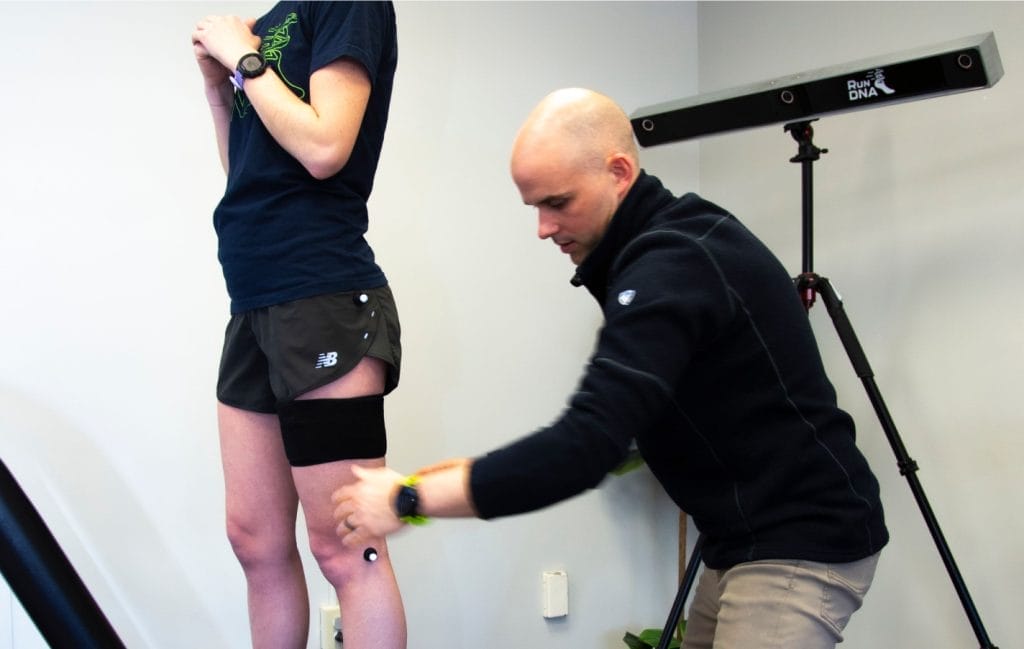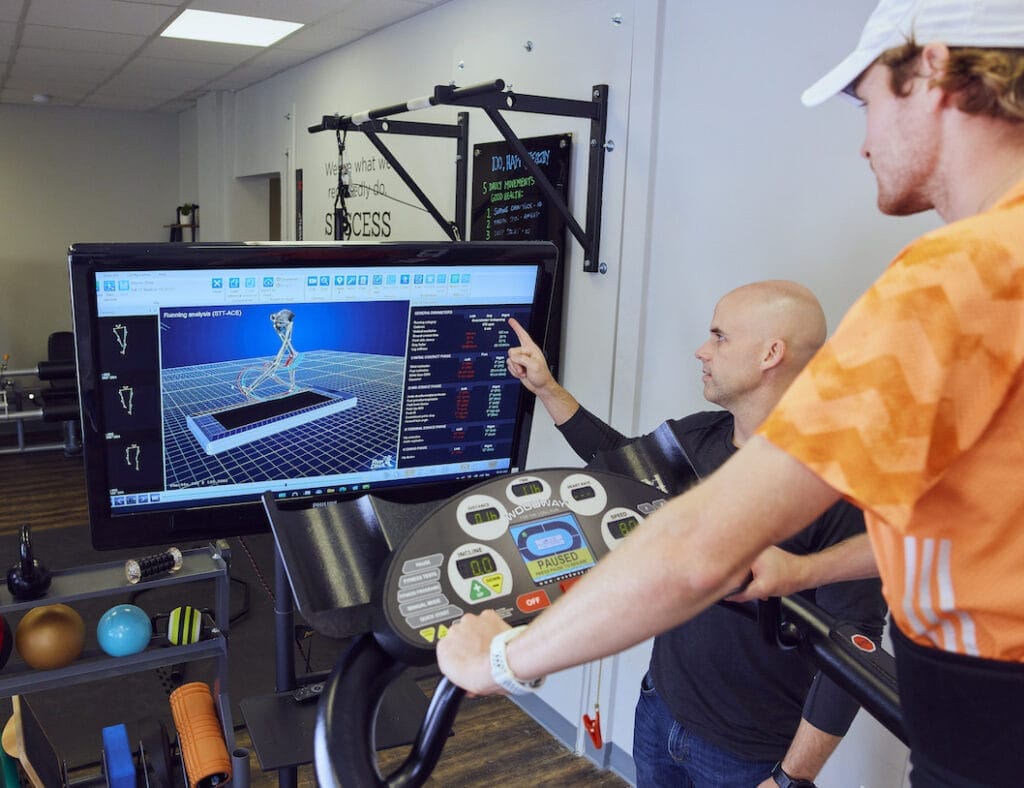Walking gait analysis is regarded by many physical therapists as an important part of orthopedic post-surgery rehab. This revolutionary development allows patients to see how they move as they recover, track their patterns and progress, and adjust treatment plans accordingly.

Common Orthopedic Surgeries Requiring Walking Gait Analysis
Walking gait analysis serves as an essential tool in the rehabilitation process for various orthopedic surgeries, helping PTs assess recovery and optimize treatment plans.
Total Knee Replacement
Following total knee replacement, patients often exhibit altered walking patterns as they adjust to their new prosthetic joint. Gait analysis helps therapists identify asymmetries, assess range of motion, and ensure proper weight distribution during walking. Through regular assessment, clinicians can track progress and modify rehabilitation protocols to achieve optimal outcomes.
Total Hip Replacement
The replacement of a hip joint can affect everything from stride length to pelvic movement. During recovery, gait analysis enables clinicians to monitor hip abductor function and overall limb alignment. This detailed assessment ensures that patients develop proper walking mechanics and avoid compensatory movements that could lead to secondary issues.
Ankle Surgeries
Ankle procedures fundamentally change how a patient’s foot interacts with the ground during walking. Whether dealing with fusion procedures or total ankle replacements, gait analysis allows rehabilitation specialists to ensure patients develop safe and efficient walking patterns. This careful monitoring prevents undue stress on the surgical site and helps maintain the proper function of adjacent joints.
Spinal Surgeries Affecting Mobility
Spinal procedures often lead to significant changes in a patient’s walking pattern. Gait analysis following surgeries such as lumbar fusion focuses on overall body mechanics, ensuring that patients maintain proper alignment and movement patterns. As the spine plays a crucial role in normal walking, this assessment is vital for guiding the rehabilitation process and preventing compensatory issues in other areas of the body.
For all these procedures, gait analysis extends beyond simple visual observation, employing various clinical tools to assess progress throughout recovery. By understanding how different surgeries impact gait, rehabilitation specialists can develop more effective, targeted treatment plans for their patients.

The Importance of Walking Gait Analysis in Orthopedic Rehabilitation
Walking gait analysis is a key tool in orthopedic rehabilitation, giving PTs insight into a patient’s walking pattern after surgery.
With quantitative assessment, your rehab can:
- Take baseline measurements straight after surgery
- Track changes in gait parameters throughout recovery
- Adjust treatment based on objective data
Modern walking gait analyses systems can pick up on subtle movement patterns that are invisible to the human eye. This precision allows physical therapists to identify potential complications or areas to focus on during rehabilitation early.
Compensatory Movements
After orthopedic surgery, patients often develop compensatory movements to avoid pain or accommodate reduced function in the surgical area. These adaptations may provide temporary relief but can lead to:
- Increased stress on non-surgical joints
- Muscle imbalances
- Chronic pain in other parts of the body
Gait analysis helps identify these compensatory patterns early in the rehabilitation process. Detecting subtle changes in weight distribution, altered joint angles or the timing of gait phases allows clinicians to address these issues before they become habitual movement patterns.
For example, a patient having knee surgery may unconsciously reduce weight-bearing on the surgical leg, and this can lead to:
- Overload on the opposite leg
- Altered pelvic mechanics
- Lower back strain
With regular walking gait assessment and knowing how to test walking gait, we can detect and fix these issues and educate you throughout your rehab.
Benefits of Walking Gait Analysis in Rehabilitation
The integration of walking gait analysis into rehabilitation protocols represents a significant advancement in orthopedic care, bringing multiple benefits to patients post-surgery.
Objective Progress Measurement
Gait analysis provides quantifiable data to track patient recovery, moving beyond subjective observations. This technology enables PTs to measure specific parameters, such as stride length, joint angles, and weight distribution, with precision. These objective measurements allow for accurate progress tracking over time, helping physical therapists make informed decisions about treatment progression and offering concrete evidence of improvement during the rehabilitation process.
Personalization of Treatment Plans
By providing detailed insights into individual walking patterns, gait analysis enables the development of customized rehabilitation protocols. Your PT can identify specific movement deficiencies or asymmetries unique to each patient, allowing for targeted interventions. This level of customization makes sure that rehabilitation efforts address the particular challenges and goals of each individual, potentially leading to more efficient and effective recovery outcomes.
Enhanced Patient Education and Motivation
Visual and quantitative data from gait analysis serves as an effective educational tool for patients. Physical therapists can demonstrate objective improvements and explain movement patterns through data visualization to help patients better understand their treatment.
Maximizing Recovery Through Precision and Insight
Walking gait analysis plays a crucial role in the success of orthopedic post-surgery rehabilitation, offering detailed insights that help refine treatment plans and track progress. Its ability to detect subtle movement issues allows clinicians to intervene early and prevent long-term complications. So, if you’re recovering from an orthopedic surgery, a walking gait analysis can help in many ways.
